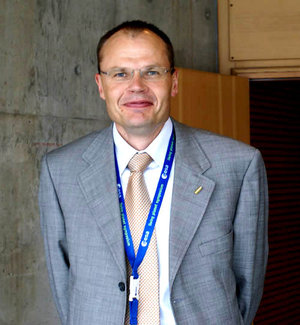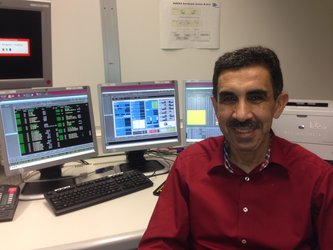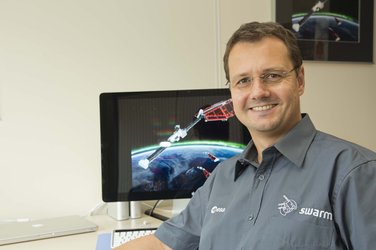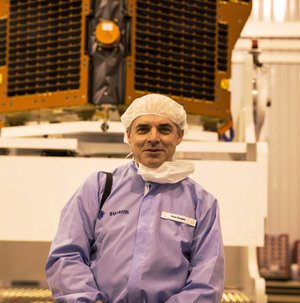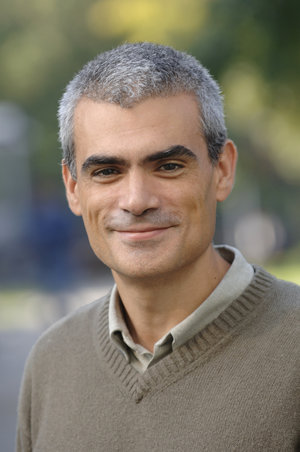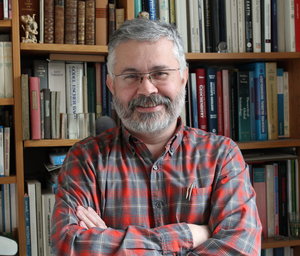Bruno Bergaglio: Launch Campaign Manager
ESA’s Bruno Bergaglio is the Engineering and Assembly, Integration and Testing Manager for Swarm. He is currently at the Russian Plesetsk Cosmodrome overseeing preparations for launch. In an interview, Bruno provides insight into what it takes to prepare the constellation for launch.

Bruno Bergaglio, an Italian national, has been working at ESA’s European Space Research and Technology Centre in the Netherlands since 1991. He started in the Technical directorate as a Chemical Propulsion Engineer supporting several projects. In 1995, he joined Earth Observation’s MetOp project as a Platform Principal Engineer and in 2006 he participated in the launch campaign for MetOp-A. Bruno was then appointed Engineering and Assembly, Integration and Testing (AIT) Manager for Swarm, covering the initial development of the three-satellite constellation through to preparing and overseeing the launch campaign as Launch Campaign Manager.
Bruno graduated as an Aeronautical Engineer in 1983 from the Turin Polytechnic in Italy. Before joining ESA, Bruno worked for about seven years at Alenia Spazio in Turin, covering the roles of both Propulsion Engineer and Subsystem Procurement Manager in different projects such as Tethered Satellite, Hipparcos and SAX.
ESA: What does a ‘launch campaign’ entail?
Bruno Bergaglio
The preparation and execution of a launch campaign is a long and time-consuming exercise. We start with the selection of the appropriate launch vehicle and launch site. In this period, which is usually initiated about two years before the actual launch, a number of technical and contractual meetings are held along with some visits to the chosen launch site.
When the launch vehicle is finally selected, the satellites – of course we have three Swarm satellites –have to be properly tested to show that they are compatible with the launcher and all the relevant processing and operation facilities.
The next important step involves all the logistics associated with a launch campaign, such as building an appropriately sized team and doing training, transporting of all the necessary equipment and materials to the site, and sorting out all the travel arrangements and proper accommodation for those participating.
After these preparatory tasks have been completed and when the mission passes its ‘Flight Acceptance Review’, we start the actual launch campaign – and the satellites and the team travel to the launch site.
Once everything has arrived, the support equipment is unpacked and set up; this is designed to facilitate the satellites’ handling and testing. The satellites are then carefully inspected to confirm their good health after being transported to the launch site, after which the final testing programme is carried out in preparation for the launch.
In parallel, the launcher team run preparations for the rocket. At a certain point in time, the activities of the two teams merge into a unique workflow. This happens when the satellites are mounted on the fuelled upper stage, encapsulated within the fairing and tested for the final check. The last task before the launch is to install the ‘upper composite’ on the launch vehicle at the launch pad.
When the launch activities have finally been completed, the remaining tasks to be carried out before the team returns home involve the packing and shipping the equipment used during the campaign.
ESA: What’s the most challenging aspect of having to prepare three satellites for launch?
Bruno Bergaglio
The preparation of any launch campaign is,per se,quite a demanding task. This because everything has to be thought out and planned very meticulously to make sure everything is available when you are thousands of kilometres away from your ‘home base’. A simple thing forgotten can cause weeks of delay.
When you have three satellites to handle, the problems one is going to face increase accordingly. In addition, for the Swarm launch preparation, a further element of difficulty has been the limited space available for the integration and testing in the cleanroom at the Plesetsk cosmodrome. Every operation has been studied and planned with extreme attention, taking into account the needs of both the satellite and the launcher teams.
ESA: Can you tell us what the Plesetsk launch site is like?
Bruno Bergaglio
The Plesetsk launch site is a military base managed by the Russian Space Forces, about 800 km northeast of Moscow and 200 km south of the city of Archangelsk. The region around Plesetsk has a typical taiga landscape. The climatic conditions are continental with low winter air temperatures down to –30°C and high summer temperature of 35°C.
The technicians and engineers working at the cosmodrome live in the town of Mirny, some 42 km from the Rockot launch area. The town grew in parallel with the construction of the cosmodrome, and today around 40 000 people live close to Lake Plestsy and the Emtsa River.
Our team has been staying the ‘Rockot’ hotel, which is the best out of the few hotels available in this military town. Compared to western European standards, the hotel cannot be classified as ‘4 star’, but it is sufficiently comfortable for our needs.
The town has parks, sports areas, shops, restaurants and some discotheques. Unfortunately, being a military town, not all of these facilities are available to foreign visitors. In spite of this, the team has been able to develop a very good spirit and our everyday life has been quite pleasant. Of course, the distance and time away from our families remains the hardest part of this launch campaign for the team.
ESA: What is the advantage of launching Swarm from Russia?
Bruno Bergaglio
Swarm is an Earth Explorer mission and, as such, the aim is to implement the mission within a relatively low budget.
Taking into account the financial factor, the technical characteristics of our satellites, the orbital parameters of our mission and the available launchers on the market, the Rockot-KM vehicle was identified as the most suitable candidate to launch the Swarm constellation.
The Rockot light class space vehicle (derived from the Russian strategic missile SS-19) with the Breeze-KM upper stage is designed for payload injection onto Earth orbits with a wide range of altitudes and inclinations.
Typically, Rockot is capable of launching a payload mass of up to two tonnes into a low-Earth orbit from Eurockot’s facilities at the Plesetsk cosmodrome. This makes Rockot particularly suitable for launches into high-inclination, polar and Sun synchronous orbits.
Editor's note:
This is one in a series of interviews with a few of the key people that are involved in the Swam mission. Please check back as the list will be added to over the coming weeks.








